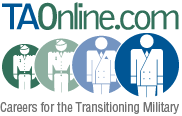Title:To Be Hired, Use Email Effectively
Author:© Copyright, 2016, Susan P. Joyce. All rights reserved
Date:July 2016
Source:workcoachcafe.com
Job search today often requires communicating with employers and recruiters by email. It's easy to send email very quickly, and a fast response often feels like the right thing to do.
You want to — and need to — respond as quickly as possible, but...
9 Steps to Better Email for Your Job Search
Take care not to give the impression that you would be someone best ignored or eliminated from consideration.
-
Do NOT send a message when you are angry.
I've seen so many job seekers blow future opportunities by responding angrily to the thanks-but-no-thanks message when they don't get a job offer.
Most of us understand how disappointing that rejection is, but before you hit the "Send" button on the I-hope-you-go-out-of-business message, take a few minutes (hours or days) to "chill out." Then, don't send a nasty message. Burning bridges is never smart in the business world.
Bonus tip: I've also seen many job seekers move to the head of the line for the next job with that employer when they respond positively and politely to the thanks-but-no-thanks message, expressing their appreciation for the opportunity to learn more about the organization and meet the people.
-
Remember your message may be shared and stored (for a long time).
Be very professional and careful in what you write related to your job search and career.
Don't trash anyone, don't make threats, and also avoid making promises you can't keep. An unprofessional message may haunt you for many months or years. See # 1 above, and don't send an angry or nasty letter.
-
Send TO one person; CC others if appropriate; use Reply All very cautiously; avoid BCC and read receipts.
When sending an inquiry or follow up to the recruiter or hiring manager, put their email address in the TO field. If other people should also receive the message, add those addressees to the CC as appropriate.
Using BCC (Blind Carbon Copy) can backfire badly because someone BCCed is able to reply-all to the message. If someone needs to see the message, include them in the CC list or forward the sent message to them later.
Avoid using read-receipts on your out-going messages. They may be considered hostile — I don't trust you, so I'm going to check to see if you opened this message. Avoid giving that impression to anyone in a potential employer's organization, even if it is true.
Bonus tip: When you send your thank-you email messages, don't TO or CC everyone you spoke to in one message. Send a unique message to each, and don't BCC anyone, not even the recruiter or hiring manager.
-
Send job search messages from a good email address.
A message from ImKool@whatever or HotMama@whatever probably won't be opened by someone who isn't expecting a message from that email address, particularly if the subject isn't relevant or interesting (see # 5 below).
For a job seeker, a trashy email address can be the kiss of death.
The best email address includes your name in it so that the message can be found in an email system when someone searches on your name.
Bonus tip: If you are worried about age discrimination, do NOT include your birth year in your email address. Guess how old BillSmith1965@whatever is? If you must use a number, pick the telephone area code or the Post Office Zip Code for your current or target location.
-
Make the subject short, clear, and relevant.
Often the subject and the sender are the only parts of the message that get read. On smart phone screens, only the first 35 to 40 characters may be seen, so put the most important words at the beginning of the subject.
When people the subject provides an obvious reason to open the message, they are more likely to read it. Or, at least, to save or forward it.
Example 1: "Admin Assistant Position Applicatio|n, Job #12345" is short, clean, clear, and obvious. Although it is longer than 35 characters, the first 35 characters (Admin Assistant Position Applicatio) describe the contents and provide the reason the message should be opened.
Example 2: "Thank you for Opportunity to Interv|iew for the Admin Assistant Position" is longer, but the first 35 characters (Thank you for Opportunity to Interv) make it clear what the message is about.
-
Keep messages and paragraphs short, clean, and clear.
I've seen numerous studies that indicate long messages are seldom read or are read only partially (first paragraph or two). This is why it is smart to put the most important information in that first paragraph.
Avoid the "wall of words" effect — opening up a message and seeing only one or two long paragraphs. Include plenty of "white space" in your messages:
- Short paragraphs.
- Bulleted or numbered lists breaking out a series of related ideas into easily digestible parts.
- Short sentences or phrases for each bullet.
Example:
Dear [person specified],
I am interested in applying for the administrative assistant position (# 12345) open in your Boston office. My experience includes three years providing administrative support to a group of life insurance sales people. My responsibilities include:
- Managing large documents.
- Coordinating calendars for 8 sales representatives and 2 sales managers.
- Arranging regional customer and training meetings for up to 300 attendees.
- Maintaining client and prospect records.
These responsibilities closely align with the requirements for your position...
-
Don't attach anything, unless an attachment is expected or requested.
Unless they have requested that you send them your resume as an attachment to a message, avoid including attachments. Otherwise, sending an attachment can almost guarantee that the message will be ignored, deleted, or automatically dumped into the junk mail folder. These days, few people open attachments they haven't requested or aren't expecting.
8. Include a "signature" at the bottom of your message.
The signature should contain your full, professional name and your current (or target) job title. Also include some of your relevant professional accomplishments like Employer ABC Sales Person of the Year (2015) and professional certifications.
Do include your LinkedIn Profile URL so it will be easy for the employer to find. They will most likely want to compare your resume or application to your Profile, so make it easy for them to find the correct Profile.
Don't make your signature longer than the message — 6 lines should be the maximum.
Bonus tip: Double-check the content in your application or resume compared with your LinkedIn Profile to be sure they match. Employers will compare them, and they will assume that the LinkedIn Profile is accurate.
-
Be sure to include a phone number in your email signature so you can be reached quickly if necessary.
This is a separate tip because it is SO important to recruiters. Put the phone number immediately below your name.
Often, recruiters are in a hurry, and they prefer to call you directly for the quickest response.
Bonus tip: If you are employed, do NOT include your work phone number! Your employer will not be pleased to discover you are job hunting. Use a personal cellphone number or a Google Voice number.
When you are employed, follow these steps, above, to be more effective in your job.
More About Being Hired

